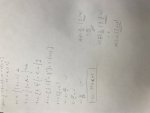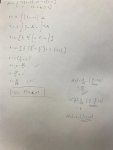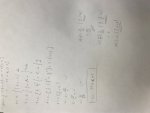Hi, i need a help with continuos random variable. I have this exercise but I can’t solve it. I solved half of it but don’t know how to finish it.
The exercise is:
We have function f(x) = {C((1/2)x + 5, for x E [2,3] and 0, for x Not E [2,3]. determine the constant C for function f to be the probability density function of a continuous random variable X. If F (x) is the distribution function of the probability of random variables X, calculate F (1), F (2.5), F (4).
I know how to get C but I do not know how to calculate F(1),F(2.5),F(4).
When i integrate C I get:
C= 4/25.
Can anyone tell me how and what to write to get all the Fs.
Firstly I wrote:
F(1) = 4/25 * (1/2 * 1 + 5) the value that I put inside the parenthesis is the value from the beginning from C (1/2x +5)
but my professor told me that is not right. Can anyone tell me what should I write there and how to get it
< link to image of young girls in sexual poses removed >
The exercise is:
We have function f(x) = {C((1/2)x + 5, for x E [2,3] and 0, for x Not E [2,3]. determine the constant C for function f to be the probability density function of a continuous random variable X. If F (x) is the distribution function of the probability of random variables X, calculate F (1), F (2.5), F (4).
I know how to get C but I do not know how to calculate F(1),F(2.5),F(4).
When i integrate C I get:
C= 4/25.
Can anyone tell me how and what to write to get all the Fs.
Firstly I wrote:
F(1) = 4/25 * (1/2 * 1 + 5) the value that I put inside the parenthesis is the value from the beginning from C (1/2x +5)
but my professor told me that is not right. Can anyone tell me what should I write there and how to get it
< link to image of young girls in sexual poses removed >
Attachments
Last edited by a moderator:



